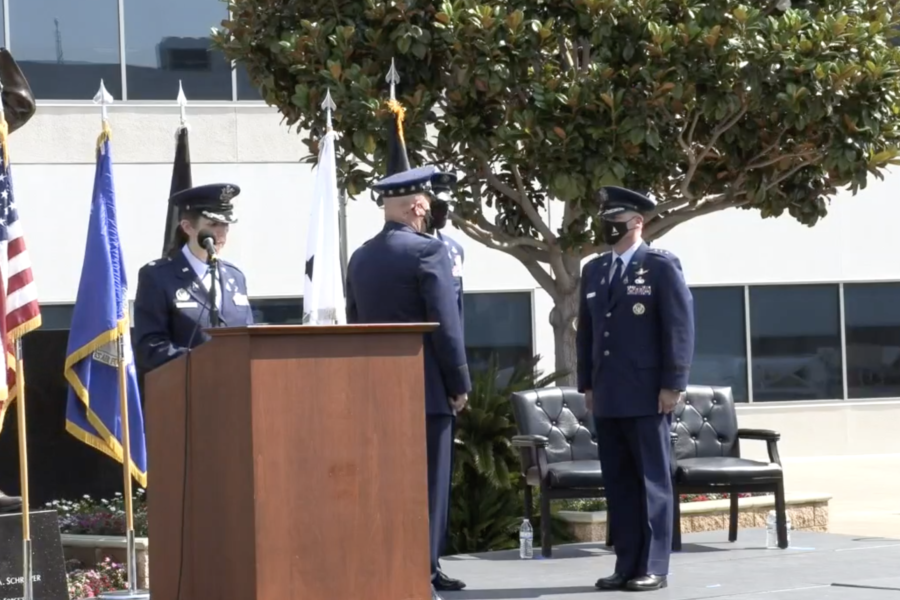The U.S. Space Force now has two of its three planned field commands in place. The Space and Missile Systems Center at Los Angeles Air Force Base, Calif., was officially redesignated Space Systems Command on Aug. 13.
At the ceremony, newly promoted Lt. Gen. Michael A. Guetlein also took over as the first commander of SSC, with Chief of Space Operations Gen. John W. “Jay” Raymond in attendance.
The redesignation has been in the works for months, as the Space Force revealed the structure of Space Systems Command in April. As part of the changeover, several Air Force units will also eventually redesignate under SSC, as will Space Launch Deltas 30 and 45 at Vandenberg Space Force Base, Calif., and Patrick Space Force Base, Fla., respectively.
Headquarters for the new command will remain in Los Angeles where the Space and Missile Systems Center has worked, under different names and changing missions, since 1954. And many former SMC officials were on hand Aug. 13 for the redesignation ceremony. But this newest change won’t be just surface level, Guetlein said.
“Space Systems Command is about continuing the culture shift from being service providers to being warfighters,” Guetlein said during the ceremony. “We cannot let this be a nameplate change from SMC to SSC. We must be bold, and we must get after the threat. To do this, we must move at the speed of relevance, by streamlining bureaucratic decision-making processes even further.”
Space Systems Command will be responsible for the research, development, and acquisition of military rockets, satellites, radars, and other space-related assets from creation to retirement. It will work alongside Space Operations Command, the first command launched by the still-young service, and Space Training and Readiness Command, which is expected to stand up in 2021 as well.
In developing and acquiring new capabilities, Raymond said the newly-formed command will have to work fast. The Space and Missile Systems Center restructured and rebranded itself as SMC 2.0 in 2019 with the goal of acquiring systems faster, and Raymond said SSC will have to continue that progress and make it even quicker.
“Every capability, every technology, every program has an expiration date. That expiration date isn’t set by us, but it’s set by our competitors,” Raymond said. “After that date, I don’t care what we’ve built. It is late to need. That capability is no longer cutting edge. That system is no longer resilient and no longer provides us the advantage that we needed to provide.
“In other words, to sustain and build our relative advantage, we must outpace our competitors. This is the challenge for the new Space Systems Command. You can’t let our capabilities reach their expiration date. The clock is ticking, and you must deliver on time.”
Guetlein, who worked at the Space and Missile Systems Center in several capacities over the course of his career, echoed that sentiment, pointing to the latest threats posed to Space Force assets in orbit as a pressing concern that needs to be addressed.
“In my last job as a deputy director of the National Reconnaissance Office, I had a front-row seat, observing the unprofessional behavior and challenges being imposed on us by our adversaries,” Guetlein said. “Gen. Raymond has been sounding the alarm and talking about direct ascent weapons, directed energy weapons, nesting dolls in space, cyber hacks, and even robots in space. These may all sound like a fantasy for the layperson, but this isn’t science fiction. It is happening, and it is happening today.”

